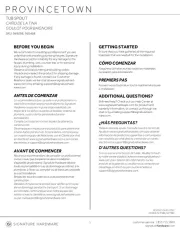Epcom X3435A Handleiding
Epcom
Niet gecategoriseerd
X3435A
Bekijk gratis de handleiding van Epcom X3435A (4 pagina’s), behorend tot de categorie Niet gecategoriseerd. Deze gids werd als nuttig beoordeeld door 50 mensen en kreeg gemiddeld 4.4 sterren uit 25.5 reviews. Heb je een vraag over Epcom X3435A of wil je andere gebruikers van dit product iets vragen? Stel een vraag
Pagina 1/4

Page 1 of 4
Installation and Operation Instructions
The LED Safety Director™ is a compact high-intensity warning system designed to direct trafc approaching from the rear of a stationary vehicle. The compact light-
stick design allows for unobtrusive interior or exterior mounting, either ush to the vehicle or using the provided mounting brackets. Inside the cab a modern, soft touch
controller provides ngertip control of the Safety Director's eight built-in ash patterns and features an LED display that mimics the selected pattern in real time.
1. Proper installation combined with operator training in the use, care, and maintenance of emergency warning devices are essential to ensure
the safety of you and those you are seeking to protect.
2. Exercise caution when working with live electrical connections.
3. This product must be properly grounded. Inadequate grounding and/or shorting of electrical connections can cause high current arcing,
which can cause personal injury and/or severe vehicle damage, including re.
4. Proper placement and installation are vital to the performance of this warning device. Install this product so that output performance of the
system is maximized and the controls are placed within convenient reach of the operator so that s/he can operate the system without losing
eye contact with the roadway.
5. Do not install this product or route any wires in the deployment area of an air bag. Equipment mounted or located in an air bag deployment
area may reduce the effectiveness of the air bag or become a projectile that could cause serious personal injury or death. Refer to the
vehicle owner’s manual for the air bag deployment area. It is the responsibility of the user/operator to determine a suitable mounting location
ensuring the safety of all passengers inside the vehicle particularly avoiding areas of potential head impact.
6. It is the responsibility of the vehicle operator to ensure during use that all features of this product work correctly. In use, the vehicle operator
should ensure the projection of the warning signal is not blocked by vehicle components (i.e., open trunks or compartment doors), people,
vehicles or other obstructions.
7. The use of this or any other warning device does not ensure all drivers can or will observe or react to a warning signal. Never take the right-
of-way for granted. It is your responsibility to be sure you can proceed safely before entering an intersection, driving against trafc, respond-
ing at a high rate of speed, or walking on or around trafc lanes.
8. This equipment is intended for use by authorized personnel only. The user is responsible for understanding and obeying all laws regarding
warning signal devices. Therefore, the user should check all applicable city, state, and federal laws and regulations. The manufacturer as-
sumes no liability for any loss resulting from the use of this warning device.
Do not install and/or operate this safety product unless you have read and understand the safety information
contained
Failure to install or use this product according to manufacturer’s recommendations may result in property damage, serious injury, and/or death to
those you are seeking to protect!
!
WARNING!
Specications:
Size: Light stick: 48” x 4 1/2” x 2”
Control box: 6” x 3 3/4” x 3/4”
Weight: Light stick: 6 lb.
Control box: 0.5 lb.
Current draw (12 VDC system): 3A MAX.
Wire the Safety Director:
Wire the safety director into the vehicles's 12V system according to Figure 2.
Provide a 5A fuse near the power take off. Use 16AWG wire or larger for the Red
and Black wire connections. If the Auxiliary Output is not used, cap the orange wire
from the Control Box. Route the lightbar cable from the Stick to the Control Box and
plug them together.
Unpacking:
Carefully remove the unit and place it on a at surface. Examine
the unit for transit damage, etc. If the vehicle has an electrical
system other than 12 Volts DC negative ground, contact your local
representative or call the manufacturer for instructions.
Installation & Mounting:
The SAFETY DIRECTOR was designed with a exible mounting system which allows
it to be mounted almost anywhere. For questions concerning a specic application
call customer service.
Prior to mounting, consideration should be given to cable location. The cable should
exit the endcap on the left side of the SAFETY DIRECTOR as you face the front of
the lightbar. Reversed mounting will result in all of the ash patterns being reversed.
The mounting location should be chosen such that there is maximum visibility to the
oncoming trafc.

Page 2 of 4
Horizontal Surface Mounting: Refer to Figure 1 for the following
instructions.
1. Place the lightbar on a at surface, and install the mounting brackets
on the rear of the bar with the supplied hardware as shown. Leave the
hardware loose, so that the brackets are movable.
2. Place the lightbar in the selected location, and mark the hole locations.
Adjust the mounting brackets as necessary.
3. Drill holes for ¼” mounting hardware (user supplied).
4. Install the lightbar with the hardware and secure.
DIRECTIONAL SIGNAL LIGHT STICK
END CAP
MOUNTING
BRACKET
CARRIAGE BOLTS
(INSTALLED @ FACTORY)
Vertical Surface Mounting: The Directional Signal light
stick can be mounted directly to
a vertical surface.
1. Determine the proper height for the lightbar, to ensure good
visibility.
2. Drill the holes for the ¼” carriage bolts, using the mounting
bracket as a template for spacing. Make sure the holes are
spaced evenly from the ends of the light bar, and at the same
height.
3. Mount the light bar with the supplied hardware, and secure.
Notes:
1. Larger wires and tight connections will provide longer service life for components. For high current wires it is highly recommended that terminal blocks or
soldered connections be used with shrink tubing to protect the connections. Do not use insulation displacement connectors (e.g., 3M Scotchlock type con-
nectors). Route wiring using grommets and sealant when passing through compartment walls. Minimize the number of splices to reduce voltage drop.
2. High ambient temperatures (e.g., under-hood) will signicantly reduce the current carrying capacity of wires, fuses, and
circuit breakers. All wiring should conform to the minimum wire size and other recommendations of the manufacturer and be
protected from moving parts and hot surfaces. Looms, grommets, cable ties, and similar installation hardware should be used to anchor and protect all
wiring.
3. Fuses or circuit breakers should be located as close to the power takeoff points as possible and properly sized to protect the wiring and devices.
4. Particular attention should be paid to the location and method of making electrical connections and splices to protect these points from corrosion and loss of
conductivity.
5. Ground termination should only be made to substantial chassis components, preferably, directly to the vehicle battery.
6. Circuit breakers are very sensitive to high temperatures and will “false trip” when mounted in hot environments or operated close to their capacity.
BATT(+)AUX OUT
ORANGE FUSE
5 AMP
RED
BLACK(-)
LIGHTBAR CABLE STICK
CONTROL
BOX
Wiring for Auxiliary Output:
An auxiliary device, such as a beacon, lightbar, worklamp, etc. can be controlled
by the "ALT" button of the control box. This device should not exceed 20A. Wire
the relay that is provided into the system as shown in gure 3, making sure that
the auxiliary device is properly wired and fused according to the manufacturer's
requirements.
Figure 2
BATT(+)
FUSE
AUX
DEVICE
GROUND(-)
(+)
GROUND(-)
RELAY
ORANGE WIRE FROM
CONTROL BOX
8785
86 30
Figure 3
Figure 1
Wiring Instructions:

CAUTION:
Disconnect the battery before wiring up the Directional Signal
to prevent accidental shorting, arcing, and /or electrical shock.
CAUTION:
This system must be connected to a separate,
fused power point. Do not wire in parallel with
any other accessory.
Maintenance:
The Safety Director requires little routine maintenance. Occasional cleaning
of the lenses is all that is required to maintain maximum light output. Use
plain water and a soft cloth, or lens polish and a very soft paper towel or
facial tissue. Since plastic scratches easily, cleaning is recommended
only when necessary. Do not use solvents as they may damage the
polycarbonate lens material.
If a problem does develop, refer to the Troubleshooting Guide.
Symptom Possible Cause
No fuctionality of Control Box or Stick Main power fuse is blown, or poor connection
One Control Box LED blinks continuously Poor connection bewteen Control Box and Stick
One or more segments of Stick do not light Stick is defective
Aux device will not turn on Aux fuse is blown, or poor connection
Aux device will not turn off Relay is shorted from excessive load current
Troubleshooting Guide:
Figure 4
Control Pad Mounting:
To mount the control pad with Velcro, separate the two circular halves,
remove the backing and adhere one piece on the vehicle dashboard
and adhere the other to the back of the controller. To mount the
control pad using the swivel mount, rst mount the swivel unit to the
dashboard with either the supplied screws (note, the suction cup will
not work after drilling screws through the swivel base) or by turning the
lever at the base of the swivel unit to engage the suction cup. Push
the controller onto swivel slide and press the control pad down onto
the slide until it engages the slot in the control pad(see Figure 5). (You
may need to turn the controller clockwise once engaged with the slide
to tighten it.) Turn the dial on the swivel head to tighten it against the
back of the control pad. Finally, loosen the hand screw on the swivel
neck to adjust the angle of the control pad. Hold the pad in the desired
position while tightening the hand screw on the swivel neck.
Operation:
Press the left power button to turn the unit on/off. The left arrow button
alternates between left arrow and left continuous arrow ash modes.
The mode button alternates between center out, center out solid,
wig wag, alternating (SAE J595 Class 1), and alternating quad ash
modes. The right arrow button alternates between right arrow and
right continuous arrow ash modes. The ALT button is for the auxiliary
control on/off. See Figure 4.
Push the controller onto swivel slide and press
the control pad down onto the slide until it
engages the slot in the control pad.
Figure 5
Page 3 of 4
!
!
Flash Patterns
LEFT (L) LEFT SOLID (LS) RIGHT(R) RIGHT SOLID (RS)
CENTER OUT (C) CENTER OUT SOLID (CS) WIG WAG (WW) ALTERNATING QUAD FLASH (AQF)
ALTERNATING SINGLE FLASH (ASF)
Note: SAE ash patterns are Wig Wag (Class 2) and Alternating Single Flash
(Class 1).
Product specificaties
| Merk: | Epcom |
| Categorie: | Niet gecategoriseerd |
| Model: | X3435A |
| Kleur van het product: | Zwart |
| Breedte: | 1219.2 mm |
| Aantal lampen: | 48 lampen |
| Soort lamp: | LED |
| Stroom: | 1.6 A |
| Type stroombron: | DC |
| DC voltage input: | 12 V |
| Certificering: | SAE J595 Class I, CE, R10 |
| Aantal leds: | 48 |
| Type product: | Lichtbalk |
| Aantal lichteffecten: | 9 |
Heb je hulp nodig?
Als je hulp nodig hebt met Epcom X3435A stel dan hieronder een vraag en andere gebruikers zullen je antwoorden
Handleiding Niet gecategoriseerd Epcom

6 Januari 2024

6 Januari 2024

6 Januari 2024

6 Januari 2024

6 Januari 2024

6 Januari 2024

6 Januari 2024

6 Januari 2024

6 Januari 2024

6 Januari 2024
Handleiding Niet gecategoriseerd
- Ganz
- Jacuzzi
- AtomoSynth
- Roland
- Black Line
- Hillvert
- Doona
- LUXBIRD
- Spektrum
- O&O Software
- Texas Instruments
- Inverx
- Skullcandy
- Wasco
- MOZOS
Nieuwste handleidingen voor Niet gecategoriseerd
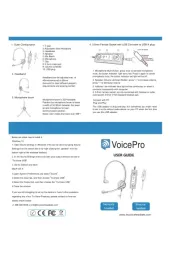
31 Juli 2025
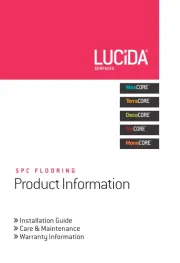
31 Juli 2025
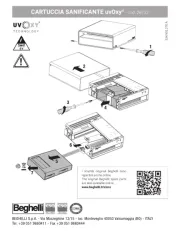
31 Juli 2025
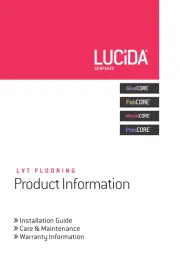
31 Juli 2025
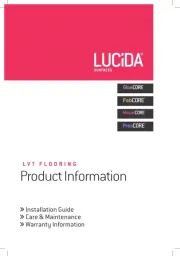
31 Juli 2025
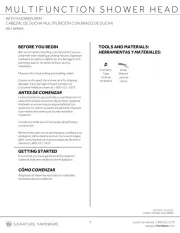
31 Juli 2025
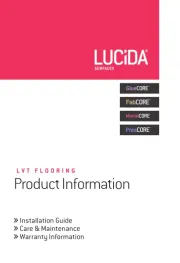
31 Juli 2025
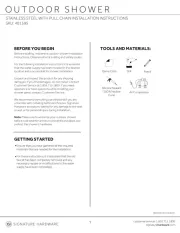
31 Juli 2025
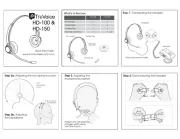
31 Juli 2025
